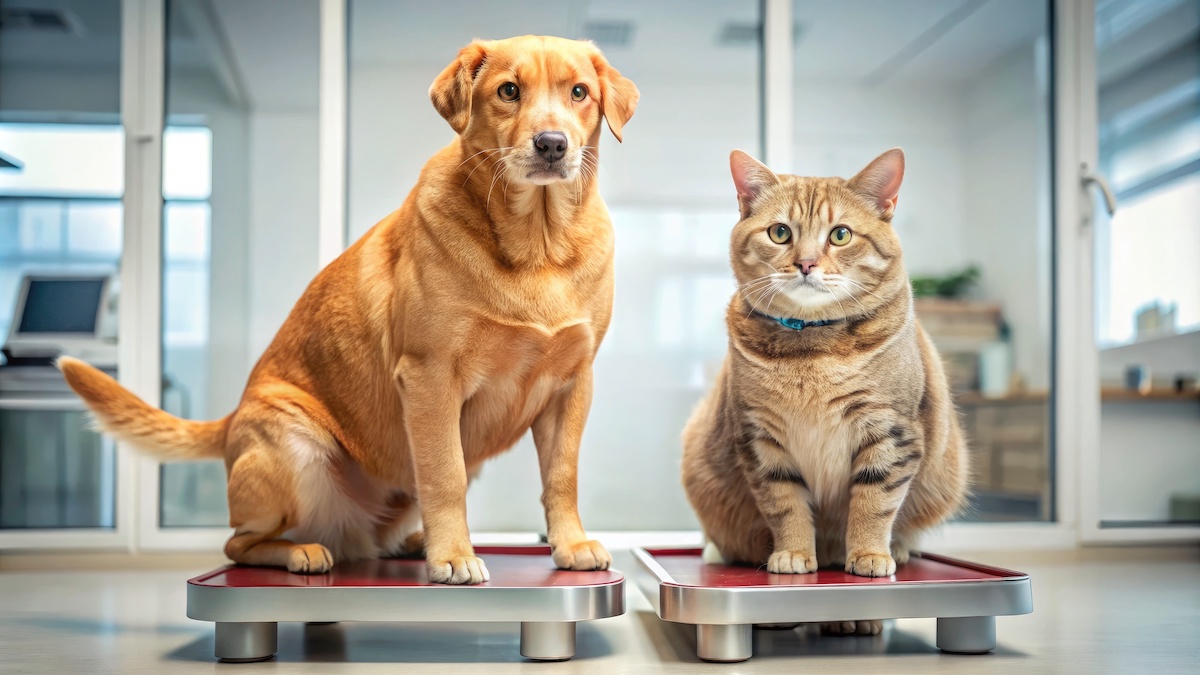
Did you know that more than half of U.S. dogs and cats are overweight? These pets are at a higher risk for developing serious medical problems, including arthritis, diabetes, breathing problems, and some forms of cancer. So how can you slim down your super-sized pet and reduce the risk of these diseases? The answer is easier than you think.
1. SIZE UP YOUR PET. Ask your veterinarian about your pet’s body condition score (or BCS). Using the BCS scale, your veterinarian can easily determine whether your pet is underweight, overweight, or right on track. As a rule, you should be able to feel (but not see) your pet’s ribs through a thin layer of fat and see a defined “waist” between the ribs and hips.
2. MEASURE MEALS. Too many pet owners simply fill the bowl or estimate how much they’re feeding. But did you know that once a cat has received the calories he needs (typically less than 300 per day), adding just one extra teaspoon of dry food each day can add up to a pound of weight gain in a year? Keep in mind that for the average 10-pound cat, this is a 10 percent weight gain!
3. EXERCISE. Exercise and good nutrition are powerful partners to help your pet live a long and healthy life. For dogs, as little as 20 to 30 minutes of daily brisk walking is all it takes to boost immune function, improve cardiovascular health, and reduce many behavioral problems. For cats, try playing chase (using a laser pointer [avoid the eyes], remote-controlled toy, or ball of paper) for five to 15 minutes each day.
Source: Association for Pet Obesity Prevention http://www.petobesityprevention.com/











